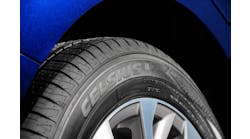The Auto Care Association provided an outline of the spending bill Congress passed on Dec. 21 as it applies to the automotive aftermarket. Here’s a look at some of the pieces of the massive bill, which provides additional COVID-19 relief, in addition to regular government funding for the next nine months.
The Consolidated Appropriations Act 2021 includes these pandemic-related provisions:
- An extension of the Paycheck Protection Program (PPP), with these amendments:
- Eligible small businesses with fewer than 300 employees that have experienced at least a 25% loss in gross revenue may be eligible for a second PPP loan.
- PPP loans that are forgiven and Economic Injury Disaster Loan advance payments will not be considered taxable income.
- PPP covered expenses may be deductible even if the PPP loan is forgiven.
- There’s a new, one-page loan forgiveness form for PPP loans of less than $150,000.
- Tax credits for paid sick and family leave have been extended. (The Small Business Administration is required to create implementing regulations within 10 days of enactment.)
- There’s a “Return to work reporting” provision that requires states to have a method to address concerns that individuals receiving pandemic unemployment assistance are refusing to return to work or accept an offer to work without good cause. This will include a reporting method for employers, as well as a requirement to provide notice to those receiving unemployment benefits that describes their rights.
Additionally, the spending bill includes some industry-specific items:
- In a statement, the National Highway Traffic Safety Administration (NHTSA) is encouraged to implement tire-related provisions from the Tire Efficiency, Safety and Registration Act of 2015. (That’s the much talked about issue of tire registration.)
- NHTSA is also directed to report to Congress on the agency’s schedule and plan for presenting regulations regarding tire efficiency as directed by the FAST Act.
- There’s funding for NHTSA to conduct behavioral research on advanced driver assistance systems and automated driving systems, plus improving consumer responses to safety recalls.
- The same statement that related to tire regulations also encourages “NHTSA to work with stakeholders on vehicle electronics and cybersecurity challenges, including the development of objective cyber risk evaluation methods that may be applied to a motor vehicle and its associated information sharing eco-systems.”



